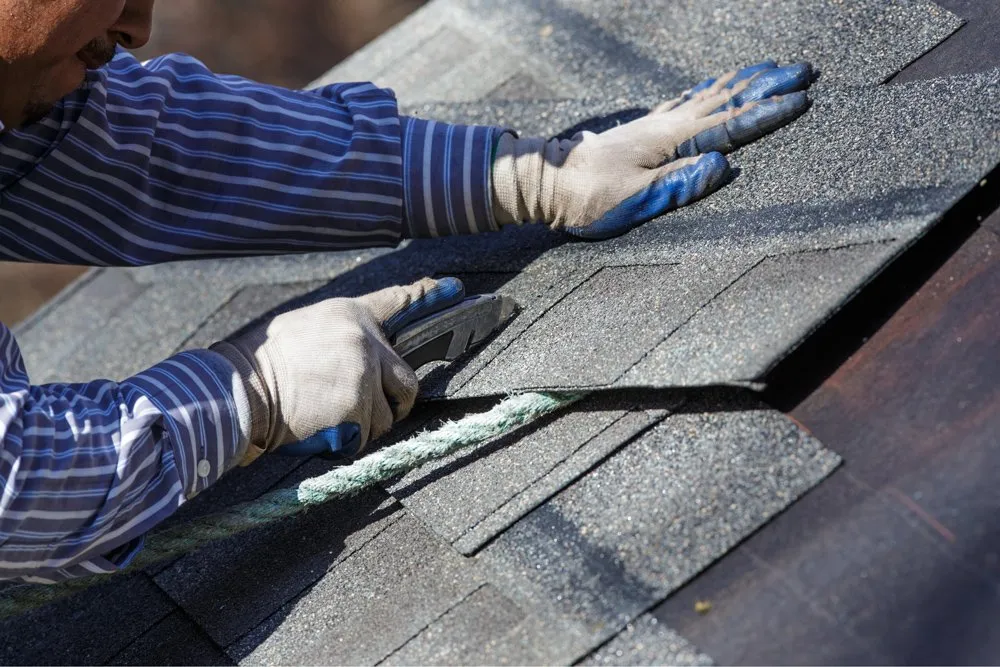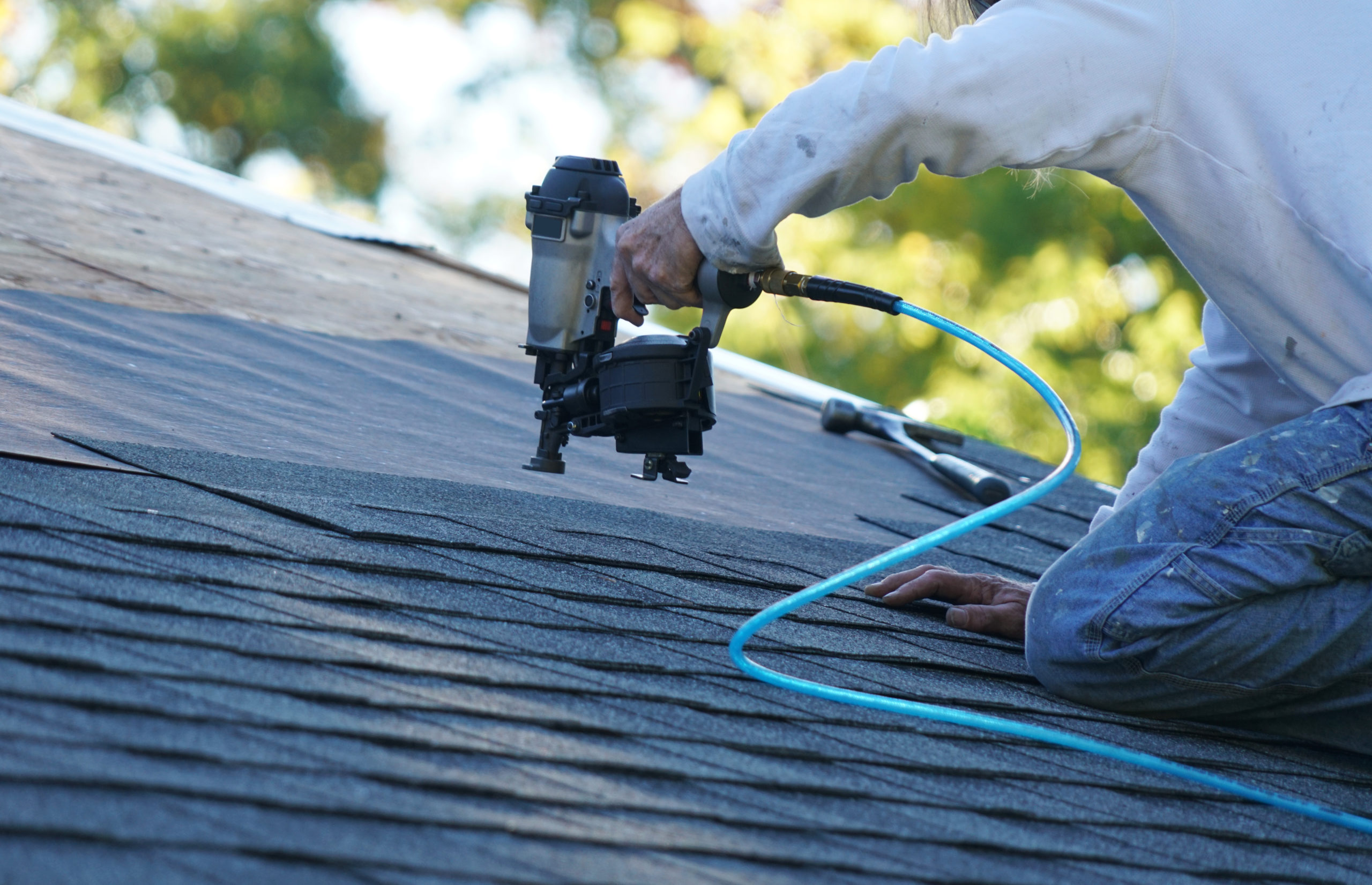Seasonal Roof Fixing List: Prepare Your Roof for each Climate
As a house owner, you know the relevance of safeguarding your financial investment, and your roof plays a vital function in that. Each season brings special difficulties that can influence its stability. By following a seasonal roof fixing checklist, you can stay in advance of potential issues. From winter season ice dams to summertime heat, each step is significant. Allow's discover how proper upkeep can guard your home and expand your roof's life-span.
Checking Your Roof Covering for Winter Season Readiness
As winter months methods, it's vital to inspect your roofing system to validate it can withstand rough climate condition. Beginning by looking for missing or harmed roof shingles; even a tiny issue can cause significant leaks when snow and ice accumulate. Next, analyze the flashing around vents and smokeshafts-- this location is often at risk to water intrusion.
Do not neglect to try to find indications of drooping or uneven surfaces, as these might show architectural problems. In addition, verify your gutters are clear; clogged up gutters can cause ice dams that harm your roof.
 roof repair
roof repair
Spring Cleansing: Cleaning Particles and Checking for Damage
Once wintertime's hold launches, it's time to tackle springtime cleansing on your roof by eliminating debris and looking for any damage. Begin by inspecting your roof covering for dropped branches, leaves, and various other debris that can catch dampness and trigger rot. A tidy roofing advertises much better drainage and avoids mold growth.
Next, get hold of a tough ladder and thoroughly check roof shingles for splits or missing pieces. Take note of locations around vents and chimneys, as these places are susceptible to leakages. Do not neglect to examine your gutters, guaranteeing they're without blockages that could cause water pooling.
While you're up there, seek indications of wear, like corrosion on metal flashing or loose seals around skylights. Resolving them now can conserve you from costly repairs later Discover more on if you detect any kind of concerns. A little springtime cleaning goes a long method in maintaining your roof's stability.
Summer Heat: Analyzing Your Roofing for Heat-Related Issues
As summer heat escalates, it's necessary to evaluate your roof for heat-related problems. Look for any kind of shingle damage, seek indications of warmth fastening, and assess how well your roofing ventilates. Taking these steps currently can avoid larger issues later on.
Evaluate for Tile Damages
 roof repair
roof repair
Look For Warm Buckling
Warmth fastening is a typical problem that can arise during the scorching summer season, and it's vital to look for it on your roof covering. As temperature levels rise, roof products, especially asphalt shingles, can expand and contract. This activity can lead to bending, creating unattractive lumps or cracks. Start by examining your roofing aesthetically; try to find any type of unequal surfaces or raised sides. Pay unique interest to areas around vents and smokeshafts, where buckling is much more most likely to take place. If you identify any type of signs of warm fastening, it's essential to resolve them quickly to stop more damage. Take into consideration getting in touch with a professional if you're not sure regarding the level of the concern or just how to fix it efficiently.
Assess Roof Covering Air Flow Effectiveness
After looking for warmth fastening, it is necessary to review your roofing system's ventilation effectiveness. Appropriate ventilation helps manage temperature and dampness, stopping damages from too much warm. Start by examining your vents; make sure they're not blocked by particles or insulation. Look for indicators of insufficient air flow, like heat accumulation in your attic or warped roof covering products. If your soffit vents and ridge vents function with each other effectively, you may likewise want to examine. If your home really feels stale and overheated, think about updating to more effective ventilation systems, like powered attic followers or extra soffit vents. Keep in mind, keeping good ventilation not just extends your roof's life but likewise boosts your home's overall power efficiency, ensuring comfort throughout those hot summer season.
Rainy Period Readiness: Guaranteeing Appropriate Drain
As the rainy period methods, you need to ensure your roofing's water drainage system prepares to take care of hefty rainstorms. Begin by inspecting your rain gutters and downspouts, and see to it they're clear of particles. Do not neglect to inspect the flashing and seals to stop leakages and water damage.
Examine Rain Gutters and Downspouts
During the rainy season, it is critical to on a regular basis check your gutters and downspouts to ensure appropriate drainage. Beginning by inspecting for any type of visible particles, like leaves or twigs, that could obstruct the flow of water. Make certain the rain gutters are securely attached and cost-free from drooping, as this can trap water and cause leaks. Next off, check out the downspouts for blockages or damages; a blocked downspout can create water to overflow, possibly destructive your roof and foundation. Also, confirm that downspouts straight water away from your home's structure. If you detect any type of concerns, resolve them quickly to stop expensive repair work. When hefty rainfalls hit., a little maintenance currently can conserve you big frustrations later on.
Clean Roofing System Surface Area Particles
To assure your roofing system can take care of the rainy season, it's necessary to cleanse any kind of particles from the surface area on a regular basis. Leaves, twigs, and dirt can gather, blocking drain courses and triggering water to pool. This trapped water can lead to leaks and damage over time. Grab a durable ladder and inspect your roof covering for any accumulation. Utilize a roof covering rake or broom to carefully eliminate particles, taking care not to damage the roof shingles. Do not neglect to inspect your seamless gutters as well, guaranteeing they're clear and working effectively. After cleaning, monitor your roofing system after hefty rains to detect any type of possible concerns early. Keeping your roof covering free from debris is crucial for stopping costly repairs down the line.
Check Flashing and Seals
After removing your roofing of particles, take a more detailed look at the flashing and seals around vents, skylights, and smokeshafts. These areas are important for preventing leaks throughout the rainy season. Inspect the blinking for any signs of corrosion, cracks, or gaps. It's crucial to repair or change it promptly if you observe any kind of damages. Next, examine the seals; they should be limited and undamaged. Try to find any kind of peeling or damaged areas that might permit water to leak in. If you discover any kind of compromised seals, think about resealing them with a top notch roofing sealer. Making sure these components are in excellent condition will certainly help maintain appropriate water drainage and protect your home from water damages during heavy rains.
Checking and Keeping Roof Covering Seals and Flashing
While it might appear easy to neglect, inspecting and preserving roof seals and blinking is important for preventing leaks and water damage. If you identify any type of issues, it's ideal to reseal them with ideal roof covering sealer to assure a tight fit.
Next, analyze the flashing, which routes water away from critical areas. Check for rust, loose areas, or curved edges.
Finally, do not neglect to wipe any particles that could block the seals or blinking. Keeping these parts healthy will help guard your roof covering against the components and prolong its lifespan.
Gutter Upkeep: Maintaining Water Flowing Efficiently
Since your seamless gutters play an important function in guiding rain away from your home, routine upkeep is crucial for protecting against water damages and foundation concerns. Start by cleaning out particles like fallen leaves, twigs, and dirt. A blocked seamless gutter can bring about water overflow, which might damage your roofing and exterior siding. Use a sturdy ladder to reach the seamless gutters safely, and wear handwear covers to safeguard your hands.
Next, examine for any indicators of rust, openings, or sagging sections. Repair work or change the damaged parts without delay if you discover any kind of damages. Verify downspouts are guiding water at the very least six feet far from your foundation. If required., take into consideration adding extensions.
Ultimately, examine that your gutters are effectively sloped, ideally a quarter inch for each ten feet. This incline warranties water flows efficiently towards the downspouts. Regular upkeep will maintain your seamless gutters operating successfully and shield your home from expensive repair work.
Scheduling Expert Assessments for Comprehensive Treatment
Consistently scheduling expert evaluations is essential for preserving your roof's integrity. These experts can spot potential problems prior to they turn into expensive repair services. Go for at the very least two assessments a year-- one in the spring and one more in the autumn. This timing permits you to resolve any kind of damages created by winter weather or summer season storms.
Throughout assessments, professionals will certainly assess shingles, blinking, and ventilation, guaranteeing every little thing's in top form. They'll likewise look for signs of wear, leakages, or mold, which you might forget. Setting up these examinations not only prolongs your roof covering's life-span but likewise provides you comfort.
If you're not sure regarding the problem of your roofing, don't hesitate to call an expert. Purchasing these check-ups now can conserve you a whole lot later. Prioritize your roofing system's health, and you'll be well-prepared for whatever climate comes your way.
Often Asked Inquiries
Exactly how Often Should I Examine My Roof Throughout the Year?
You need to evaluate your roof a minimum of twice a year, preferably in spring and fall. After serious weather condition occasions, check for damages too. Routine inspections assist you capture problems early and save cash on repair services.
What Indications Show I Required a Roof Substitute Rather of Repair Service?
 roof repair
roof repair
Can I Perform Roofing Repair Works Myself, or Should I Employ an Expert?
You can perform minor roofing system repair work yourself if you're comfy with heights and fundamental devices, however employing a specialist assurances safety and security and proper job. Don't take the chance of damage; it might be worth the investment for comfort.
What Are the Ideal Materials for Roofing Fixes in Different Environments?
For various climates, you'll want materials like asphalt shingles for modest areas, steel roof for extremes, and clay ceramic tiles for hot regions. Always think about neighborhood climate patterns to ensure your roofing holds up against the components properly.
Exactly How Do Roof Covering Warranties Impact Seasonal Maintenance Responsibilities?
Roof covering guarantees usually define upkeep responsibilities, so you'll require to review the terms. If you don't keep your roofing as needed, you may invalidate the warranty, leaving you responsible for pricey repair work.
Seasonal Roof Covering Repair Checklist: Prepare Your Roof for Every Weather
When wintertime's grasp releases, it's time to take on spring cleaning on your roofing by getting rid of away particles and checking for any damage. Check for any tile damages, look for indications of heat buckling, and assess exactly how well your roof covering aerates. If you find any kind of issues, think about getting in touch with a specialist for repair work to keep your roofing in leading shape and protect your home from possible water damage.
While it could seem simple to neglect, checking and keeping roof covering seals and blinking is essential for protecting against leaks and water damages.